In the world of computer peripherals, mechanical keyboards have gained immense popularity for their tactile feedback, durability, and overall typing experience. Whether you are a professional typist, a dedicated gamer, or a keyboard enthusiast, finding the perfect mechanical keyboard to suit your needs can significantly enhance your typing pleasure.
In this comprehensive article, we delve into some the best mechanical keyboards available in the market, catering to typists and keyboard enthusiasts alike. We will explore the key features, benefits, and unique qualities of each keyboard, helping you make an informed decision in choosing the best mechanical keyboard that suits your preferences and typing style.
Table of Contents
Introduction
For writers, coders, or anyone who spends hours a day at the keyboard, using the right mechanical keyboard can make a huge difference in typing comfort, speed, and accuracy.
Mechanical keyboards provide a responsive, satisfying typing experience that membrane keyboards just can’t match. The tactile feel of mechanical key switches and customizable layouts reduce fatigue and errors, while enhancing your productivity.
But with so many mechanical keyboards on the market today catering to different priorities like gaming, programming or typing, it can be tricky to know which models are truly the best fit for typists and keyboard enthusiasts.
1. Overview of Mechanical keyboards
Mechanical keyboards use individual physical switches under each key rather than a rubber membrane sheet like typical keyboards. This gives them superior responsiveness and typing feel.
The switches have separate moving parts and spring-loaded mechanisms that provide tactile or auditory feedback when actuating. This allows for precise control over actuation points and finger pressure.
Common switch types include:
Linear – Smooth, consistent keypress without bump or click
Tactile – Non-audible bump gives confirmation when actuated
Clicky – Audible click along with the tactile bump
For typists, mechanical keyboards offer many advantages:
Enhanced precision and accuracy – The tactile feedback allows faster responses and reduces errors. You can confirm when a key actuates.
Comfort and reduced fatigue – The ergonomic designs and ability to customize switch resistance reduces strain during long typing sessions.
Faster key repetition – No need to release keys all the way to bottom during rapid typing. This enables higher words per minute.
Customizability – Switches, keycaps, and layouts can be tailored for optimal personal typing experience.
Durability – Mechanical keyboards far outlast typical membrane keyboards due to higher quality parts.
Mechanical keyboards require some adjustment from traditional designs but give typists unparalleled responsiveness and efficiency. The satisfying, customizable typing experience makes them a smart investment for productivity.
In this article, we explore some budget-friendly options under $100. Whether you’re equipping your home office, coding station, or just looking to upgrade your typing game, we’ll cover the ideal mechanical keyboards for every need and budget. Let’s dive in to enhance your typing comfort, accuracy and speed!
Understanding Mechanical Keyboards
Before delving into the best mechanical keyboards, it’s essential to understand the technology behind them. In this section, we provide an overview of mechanical keyboards, how they work, and the advantages they offer over traditional membrane keyboards.
What are the different kinds of mechanical keyboard switches
Mechanical keyboard switches are categorized into three main types – linear, tactile, and clicky. They differ based on their operating characteristics and typing feel:
Linear Switches:
- Smooth, consistent keypress from top to bottom actuation point
- No bump or click feedback
- Common linear switches: Cherry MX Red, Black, Silver
Tactile Switches:
- Non-audible bump felt at actuation point
- Provides tactile feedback when key actuates but no sound
- Common tactile switches: Cherry MX Brown, Clear, Copper
Clicky Switches:
- Audible ‘click’ sound at actuation accompanied by a tactile bump
- Most feedback both tactile and auditory
- Common clicky switches: Cherry MX Blue, Green, White
The choice comes down to preferred feel and typing style:
Linears – ideal for fast, fluid typing requiring rapid repetition
Tactiles – good balance of feedback without loud clicking
Clickies – Provides strong confirmation with each keystroke
Testing switch types can help determine optimal feedback. The force required to press down keys also varies based on spring resistance – commonly measured in grams of operating force. This further customizes the typing experience.
In this article, we will cover the features and configurations of the different kinds of switches to help you decide which ones are more suitable to your needs and preferences. So, let’s start by giving some details on the features of mechanical switches and their differences.
History of mechanical switches
Here is a brief overview of the history of mechanical keyboard switches:
– 1960s – IBM introduces the IBM Selectric typewriter with mechanical key switches, a precursor to modern mechanical keyboards.

– 1970s – Various computer terminals emerge using mechanical key switches, including the IBM 3277 terminal in 1971.
– 1983 – Cherry unveils the MX switch that becomes the basis for modern mechanical key switches. Their MX series establishes color-codes by switch type.
– 1984 – The IBM Model M keyboard debuts buckling spring key switches, which become very popular and influential on mechanical keyboard design.
– 1990s – Mechanical keyboards fall out of favor as membrane and rubber dome keyboards dominate the consumer market with their lower costs. Mechanicals get relegated to niche roles.
– 1996 – Cherry MX switches introduce the “Cherry cross” stem design allowing keycap customization, a major innovation.

– 2000s – With enthusiasm on the rise, niche mechanical keyboard companies like DAS Keyboard bring new models to market.
– 2010s – Mechanical keyboards surge back into the mainstream for gamers and enthusiasts seeking better tactile feel and performance. Custom mechanical keyboards explode in popularity.
– Today – Major brands offer more mechanical keyboard options. Mechanical switches have evolved with new switch makers emerging. Innovation continues around new materials, form factors, wireless capabilities and other advances to mechanical switch technology.
Though they fell out of favor for a while, the unique feel, quality, and customization of mechanical switches have fueled a massive resurgence. Today they remain the gold standard for demanding computer users.
So, what are the benefits over other the other types of keyboards?
Here are some of the main advantages of using mechanical keyboards for typing, gaming, and productivity:
For Typing:
- Tactile and audible feedback allows faster, more accurate typing
- Ability to actuate keys without bottoming out saves finger strain
- Customizable switches and layouts optimize the typing experience
- High-quality mechanical construction stands up to heavy use
- Keycap materials like PBT resist fading and wear from daily typing
For Gaming:
- Sensitive, responsive switches provide faster reaction times
- No debounce delay means rapid actuations to match twitch responses
- N-key rollover ensures all keystrokes are registered even when pressed quickly
- Durable, rugged build quality withstands high-intensity gaming
- Backlighting modes on most gaming mechanical keyboards
For Productivity:
- Comfortable use during long working hours reduces fatigue
- Tactile feedback facilitates touch typing and data entry
- Macros and programmability boost efficiency on repetitive tasks
- Robust build quality prevents issues from daily, heavy use
- Customizable layouts to optimize workflows
- Available in compact form factors to conserve desk space
Overall, mechanical keyboards give unparalleled speed, precision, durability, and a deeply satisfying user experience whether typing, gaming, or working. The high-performance responsiveness explains their enduring popularity with demanding users.
2. Factors to Consider When Choosing a Mechanical Keyboard
Choosing the perfect mechanical keyboard requires consideration of several factors. In this section, we outline the key elements to keep in mind while making your selection.
Keyboard Layout and Size
Based on consumer demand, these are the most common layout and sizes for keyboards that are available in the market:
Full Size/104 Keys – The most common layout with number pad and full function keys. Provides all the keys of a traditional keyboard.
80%/TKL (Tenkeyless) – A more compact layout without a number pad, keeping the alphabetic and modifier keys. Saves space while retaining arrows/functions.
75% – Further condensed with some additional modification keys like Home/End clustered into arrows.
65% – An even more compact layout with modifier keys and arrows but no function key row.
60% – Extremely minimal and space saving. Just alpha keys and modifiers with functions behind a function layer.
Beyond layouts, keyboard size is also determined by the case. Common sizes include:
Full Size – Length up to 19 inches for 104 key models. Full Size/TKL – 14 to 15 inches long. 65% and smaller – Range from 11 to 13 inches in length.
Additionally, mechanical keyboards come in varying heights based on case design:
High Profile – Tall, sloped cases. Up to 2+ inches height. Mid Profile – Intermediate 1 to 1.5 inch case heights.
Low Profile – Ultra slim cases under 1 inch high.
With many layouts and proportions available, mechanical keyboards can fit any workspace. Consider portability needs and desired key accessibility when selecting size.
Switch Type and Actuation Force
- Linear switches have smooth, consistent key travel without any bump or click. Popular linear switches include Cherry MX Red, Black, and Silver.
- Tactile switches have a noticeable but quiet bump during the key press to confirm actuation. Common tactile switches are Cherry MX Brown, Clear, and Copper.
- Clicky switches add an audible click sound at actuation in addition to the tactile bump. Examples are Cherry MX Blue, Green, and White.
- Actuation force is measured in grams and refers to how much weight or downward pressure is required for the switch to actuate and register the keystroke.
- Typical actuation forces range from 35g on light linear switches up to 80g for heavy clicky switches. 45-55g is common for tactile switches.
- Lower actuation force requires less pressing for activation. Higher force leads to more resistance and finger fatigue.
- Choosing switches with appropriate actuation force prevents tiring and injury during long typing or gaming sessions.
- Testing switches is recommended to find the optimal type and actuation force for your fingers based on activity, typing style, and personal preference.
Backlighting and Customization

- Backlighting involves installing LEDs under or around each key to illuminate the keys and make them visible in low light conditions.
- Most gaming and enthusiast mechanical keyboards offer RGB backlighting with customizable color options per key. This allows endless lighting designs and effects.
- Software is used to control lighting modes, colors, patterns, effects like wave/ripple, and brightness levels to suit user preferences.
- Some keyboards have zone backlighting which allows customizing colors in groups or sections rather than per individual key.
- Backlighting enhances visibility and aesthetics. It’s especially beneficial for gaming in the dark or typing with no ambient lighting.
- Beyond backlighting, customization refers to the ability to modify parts like keycaps, switches, stabilizers, and cables.
- Switches can be swapped out to change feel and sound. Lubrication modifies friction and acoustics.
- Keycaps come in various materials, fonts, colors, and profiles. Users can create unique looks.
- Coiled, braided and colorful cables allow for a customized look. Some keyboards offer detachable cables.
- Overall customization lets users tailor the keyboard’s look, sound, feel, and functionality to match personal preferences.
Keycap material and sculpting for fast touch typing

- Keycap material affects the texture, sound, and durability of keycaps during fast typing. Popular materials include ABS, PBT, and POM.
- PBT plastic is preferred by most typists. It resists shrinking and oil from skin, keeping legending crisp. Provides textured, grippy feel.
- ABS keycaps are more prone to shining from wear over time. But allows more custom colors and translucency effects.
- Keycap sculpting refers to the shape and profile. Sculpted rows help fingers find the home row faster.
- Convex key shape guides fingers to center of keys. Cylindrical tops facilitate smoother sliding between keys.
- Lower profiles like DSA, XDA, and Cherry lend themselves to faster typing. Higher profiles can impede speed.
- Textured finishes on keycaps provide tactile feedback for typing accuracy without looking.
- Top-printed legend positioning is ideal for fast touch typing. Side or front legends slow typing.
- Durable construction and thickness gives a premium feel during fast typing sequences. Thin walls echo more.
- Ultimately, high-quality, sculpted PBT keycaps with front-printed legends optimize the typing experience and speed.
Connectivity and Wired/Wireless Options
Wired Keyboards
- Require a cable to connect the keyboard to the computer
- Provide consistent, lag-free input as data transfer is direct
- Some have detachable cables allowing swap for custom colored cables
- No need to worry about battery life or recharging
- Often cheaper than wireless counterpart versions
- Available in USB and Type-C connections
Wireless Keyboards
- Connect to computer via Bluetooth or a USB receiver dongle
- Allow more flexible placement and improve desk aesthetics without cables
- May introduce slight latency in input which could impact gaming
- Require power source – disposable or rechargeable battery
- May need recharging or battery swaps after extensive use
- Often released alongside wired version of the same model
Many enthusiasts still prefer wired connections for minimal input lag. But wireless has become more popular for usability and convenience. High-end gaming keyboards now offer extremely low-latency wireless connectivity.
It comes down to individual priorities around cable clutter, battery management, budget, and tolerance for slight wireless latency. Testing keyboards can determine if wireless input lag is noticeable for your uses.
3. Top Mechanical Keyboards for Typists and Keyboard Enthusiasts
In this section, we present our curated list of the best mechanical keyboards available in the market. Each keyboard is thoroughly reviewed, focusing on its key features, performance, and target audience.
- Das Keyboard Model S Professional
- Ducky One 2 Mini
- Logitech G Pro X
- Leopold FC980M
- Corsair K95 RGB Platinum XT
- Keychron K2 Wireless Mechanical Keyboard
Das Keyboard Model S Professional
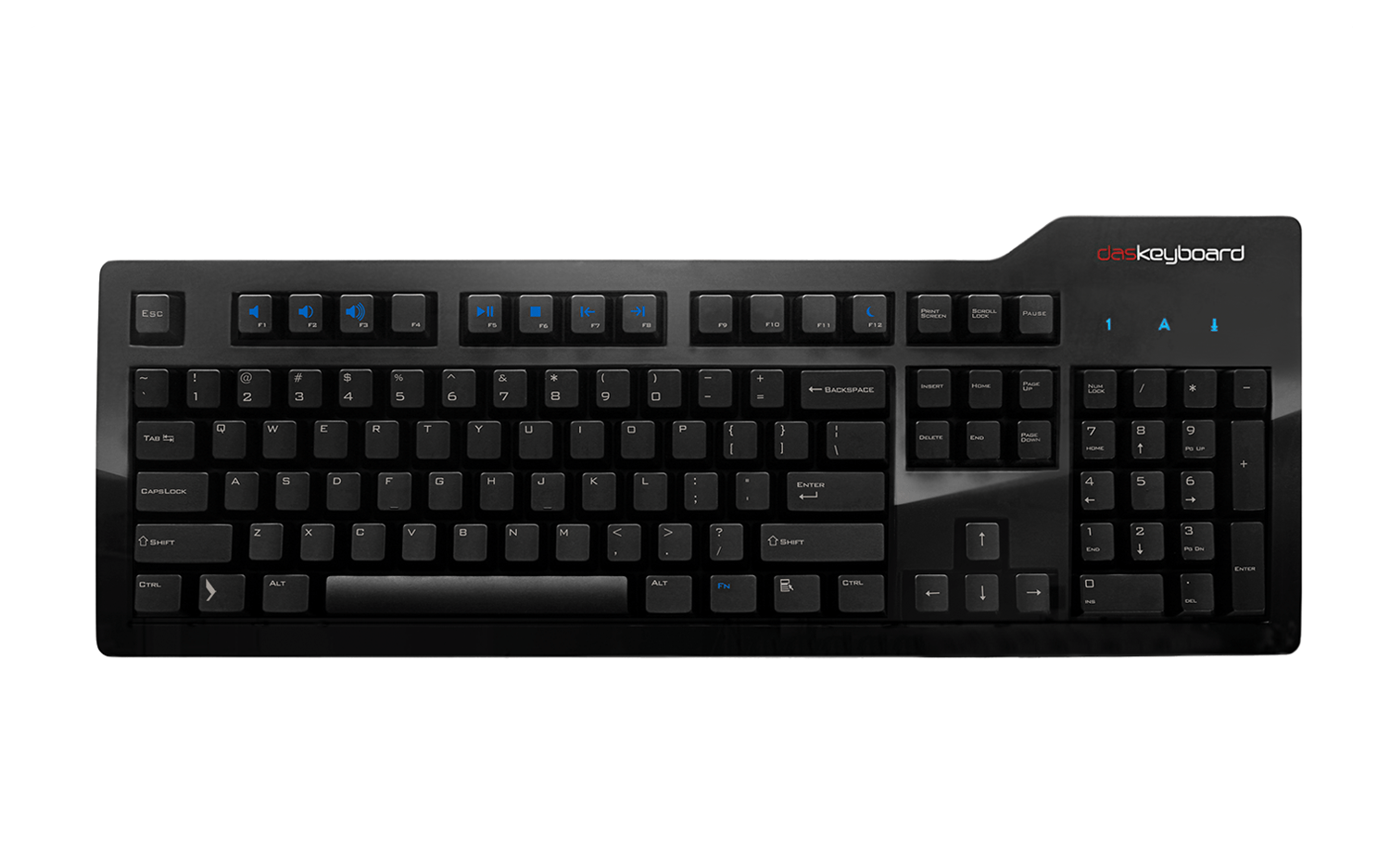
- Premium mechanical keyboard renowned for its elegant design and exceptional typing experience
- Features high-quality Cherry MX mechanical switches that provide tactile feedback and satisfying keystrokes
- Minimalist aesthetic, with an option for “blank keys” that appeals to experienced typists seeking a distraction-free environment
- Solid construction and professional appeal make it a favorite among typists, programmers, and professionals who prioritize both performance and aesthetics
- The brand is committed to delivering a top-notch typing experience for those who value quality and precision in their keyboard
Ducky One 2 Mini
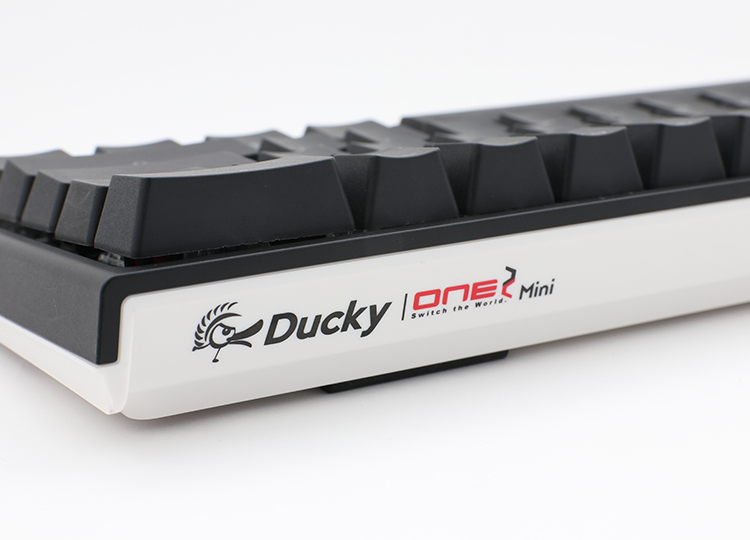
- Compact and highly regarded mechanical keyboard that has gained significant popularity among keyboard enthusiasts and gamers
- 60% keyboard features a minimalist design without a dedicated number pad or function row
- Cherry MX switch options, allowing users to choose their preferred key feel
- Customizable RGB backlighting, which can be programmed to create intricate lighting effects
- Ducky’s software for further customization, such as remapping keys and creating macros
- Compact size, high build quality, and customizable features make it a top choice for those who value both aesthetics and performance
Logitech G Pro X
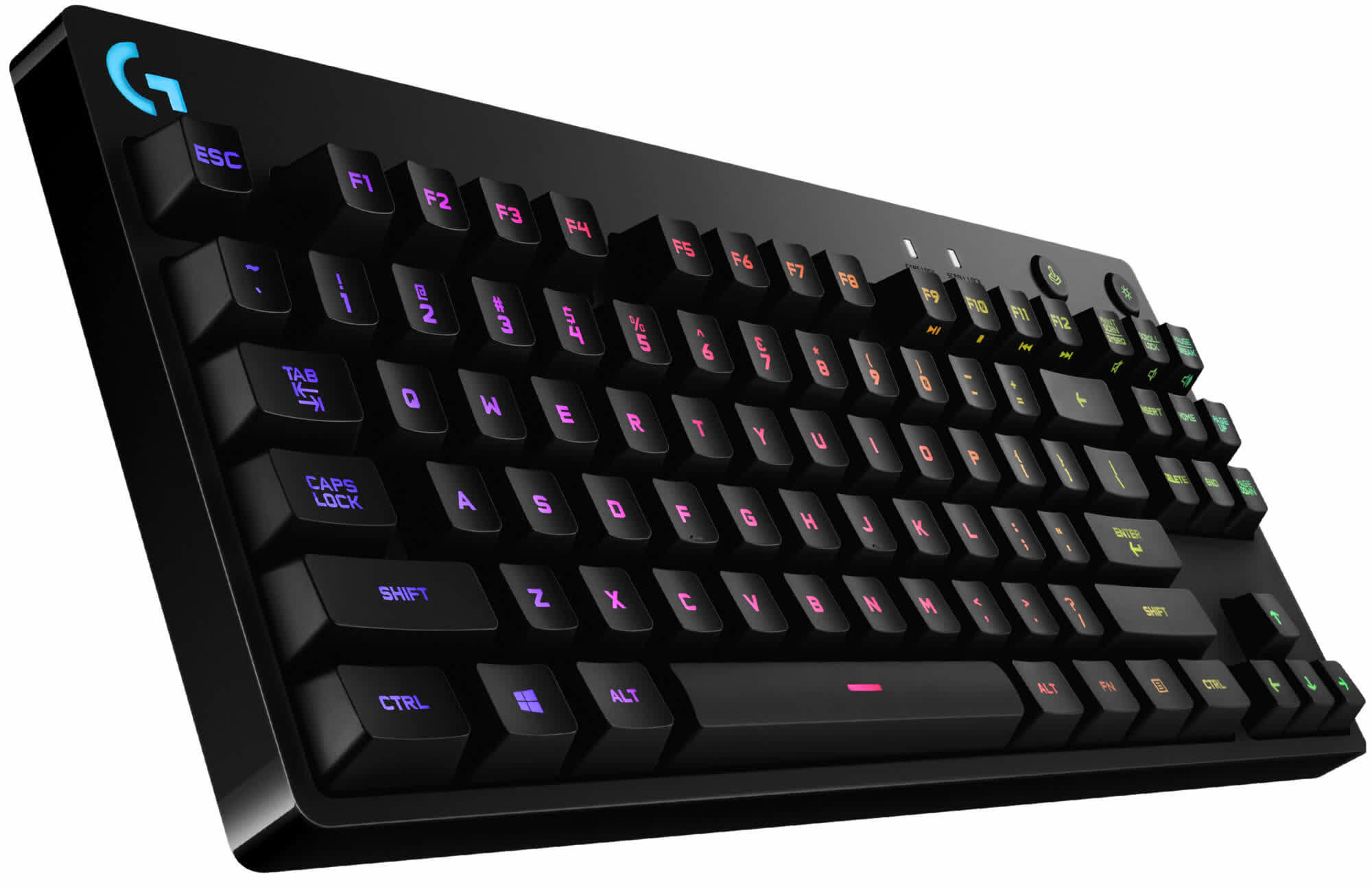
- Highly customizable mechanical keyboard designed for both gaming and professional use
- Hot-swappable switches, allowing users to easily change switches without soldering
- Compact tenkeyless (TKL) design, ensuring a clutter-free workspace
- Customizable RGB lighting, programmable macros, and dedicated media controls
- Durable build, detachable USB cable, and compatibility with Logitech’s G HUB software
Leopold FC980M

- High-quality mechanical keyboard renowned for its minimalist design and exceptional build quality.
- Unique layout that combines a compact 1800 layout with a tenkeyless design, providing a balance between space-saving and functionality
- Solid construction, utilizing Cherry MX switches to deliver a satisfying typing experience with tactile feedback
- Subdued aesthetic, absence of unnecessary features, and focus on performance make it a favorite among typists and keyboard enthusiasts who prioritize simplicity and top-notch key feel
- Producing premium mechanical keyboards that emphasize precision and comfort.
Corsair K95 RGB Platinum XT
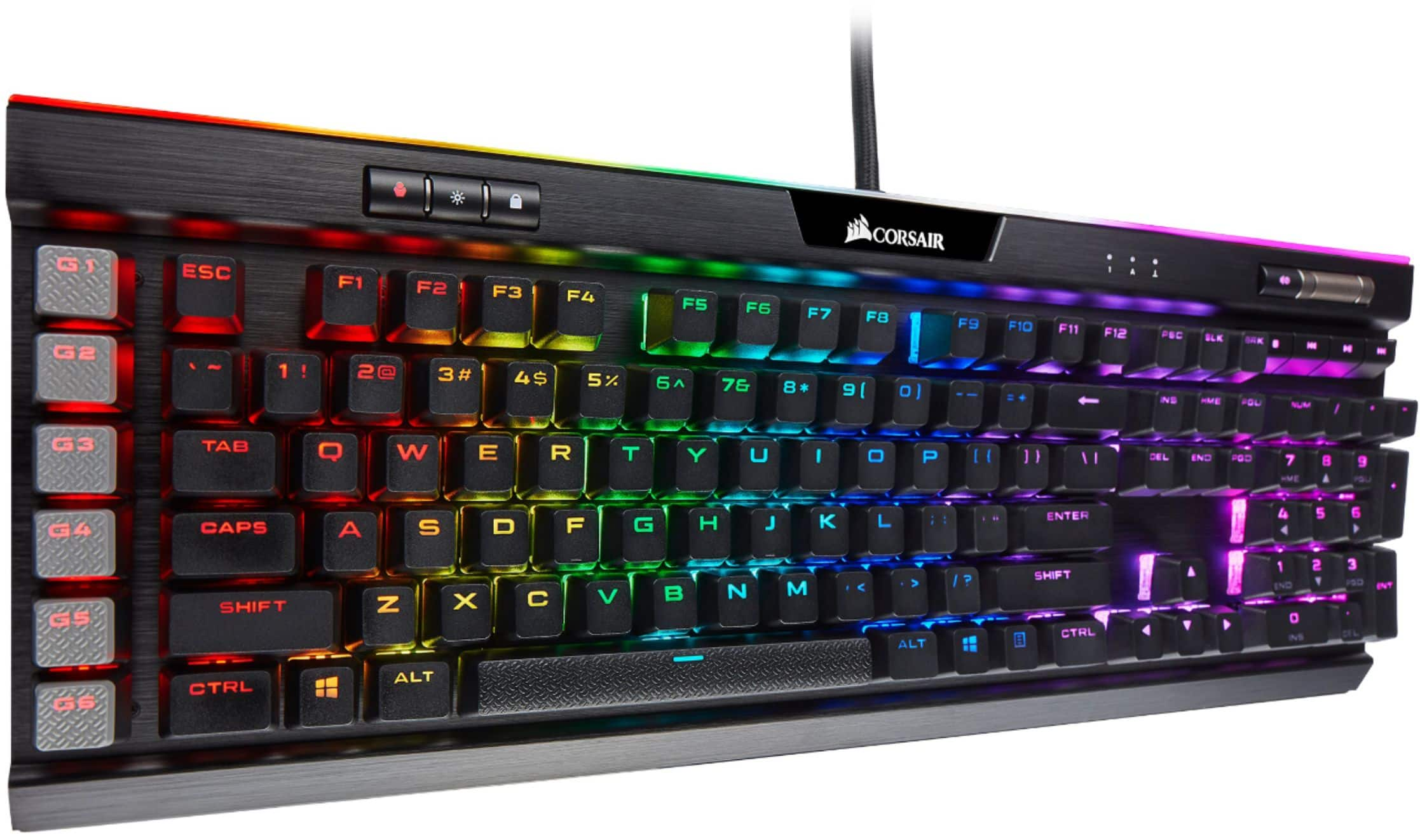
- Flagship high-end keyboard from Corsair focused on gaming
- Full-size layout with 6 dedicated macro keys
- Per-key RGB backlighting with extensive customization
- Uses Corsair OPX optical-mechanical switches for fast input
- 8MB onboard storage for saving backlighting profiles
- Sturdy aluminum frame with detachable wrist rest
- Connects via USB passthrough or optional wireless using slipstream technology
- Integrated media controls and volume wheel
- Textured keycaps optimized for gaming and durability
- 6 dedicated macro keys for custom game commands
- Retails for $199.99 given premium features and switches at company website
Overall, the Corsair K95 RGB Platinum XT packs top-tier gaming performance into a full-featured RGB mechanical keyboard with extensive customization options.
Keychron K2 Wireless Keyboard
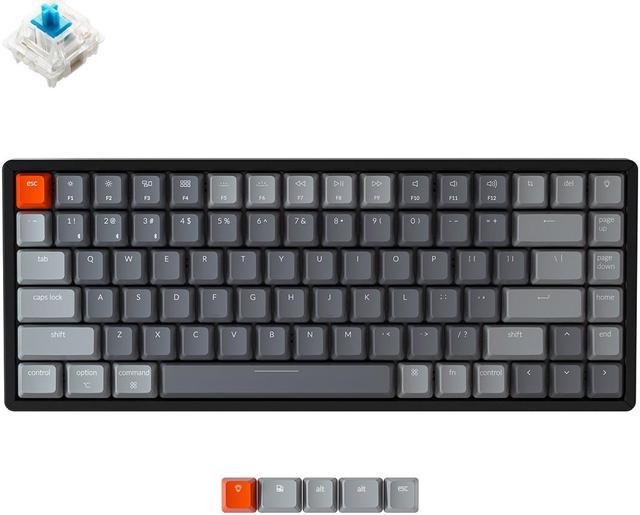
- Compact 75% layout in a slim, minimalist case design
- Available with hot-swap switch sockets to easily swap switches
- Supports both Bluetooth and 2.4G wireless connectivity
- Can also be used wired via USB-C cable
- Compatible with iOS, Android, Mac OS, and Windows
- White LED backlighting with multiple effects
- Offers choice of Gateron or Optical switches
- 84 keys including arrows and page keys in the compact layout
- Aluminum frame with ABS keycaps
- Good value proposition at under $75
- 72-hour battery life per charge with white backlighting
- Recharges via USB-C cable for convenience
The Keychron K2 packs impressive functionality into a compact, wireless mechanical keyboard at an affordable price point. It’s a flexible option for multi-device users wanting portability.
4. Maintaining and Enhancing Your Mechanical Keyboard
In this section, we provide essential maintenance tips and recommendations to prolong the lifespan and performance of your mechanical keyboard.
4.1 Cleaning and Dust Prevention
- Unplug the keyboard and turn it upside down. Gently shake it to dislodge any large pieces of debris or crumbs. You can also use a can of compressed air to blow out dust between the keys.
- Use a small vacuum cleaner attachment or brush to vacuum in between each key, being careful not to dislodge any keycaps. Vacuum around the edges as well.
- Dampen a microfiber cloth with a 50/50 mixture of water and isopropyl alcohol. Wring out any excess liquid so the cloth is just slightly damp. Gently wipe down each keycap. Let the keys fully dry before reattaching the keycaps.
- For deeper cleaning, you may need to remove all the keycaps. Place them in a bowl of soapy water and let them soak. Use a soft brush to gently clean each keycap. Rinse and allow to fully dry before replacing on the keyboard.
- You can pop off larger keys like the space bar with a keycap puller tool. Clean these pieces separately with a damp microfiber cloth. Lubricate the stabilizer bars underneath with a small amount of silicone grease before replacing the space bar.
- For dust prevention, keep your keyboard covered with a dust cover when not in use. Clean your desk area frequently with a microfiber cloth. Consider using compressed air on a regular basis to blow out dust from between the keys.
- Wipe down the exterior of the keyboard every couple of weeks with a damp microfiber cloth to prevent buildup. Avoid eating or drinking around your keyboard to prevent crumbs and sticky messes.
4.2 Switch Lubrication and Modification

Switch Lubrication
- Lubricating mechanical keyboard switches can improve the feel and reduce friction. It makes the keystrokes smoother and less scratchy.
- Common lubes used are Krytox GPL 205 Grade 0 or Tribosys 3203 which are tailored for keyboard switches. The lube is applied lightly to the slider rails of the switch housing and the stem.
- Techniques like brush painting or bag lubing involve lubricating the bottom housing and stem separately before reassembling. This allows even coatings inside the switch.
- Lubrication is recommended in moderation as too much lube can make keys feel mushy or sluggish. The goal is to reduce friction while retaining crisp keyfeel.
Switch Modification
- Enthusiasts modify switches to customize and enhance their typing experience beyond what’s available from stock switches.
- Common mods include spring swaps, which change the weight and feel of the switches, and switch filming, which improves sound and feel by reducing housing wobble.
- More extensive mods can involve swapping switch stems and housings to create hybrid switches with specific qualities. Lubrication often complements these mods.
- Modifications allow customization of tactility, sound profile, and actuation to achieve an optimal personalized typing feel for individual preference.
In summary, proper lubrication and thoughtful modifications allow mechanical keyboard enthusiasts to fine-tune the performance of their switches for a smoother, improved typing experience.
5. Conclusion
In the conclusion, we recap the importance of choosing the right mechanical keyboard for typists and keyboard enthusiasts. We emphasize the significance of investing in a keyboard that aligns with your preferences and typing style, ultimately contributing to an enjoyable and productive typing experience. With the knowledge gained from this article, readers can confidently embark on their journey to find the perfect mechanical keyboard that complements their passion for typing and keyboard technology.




